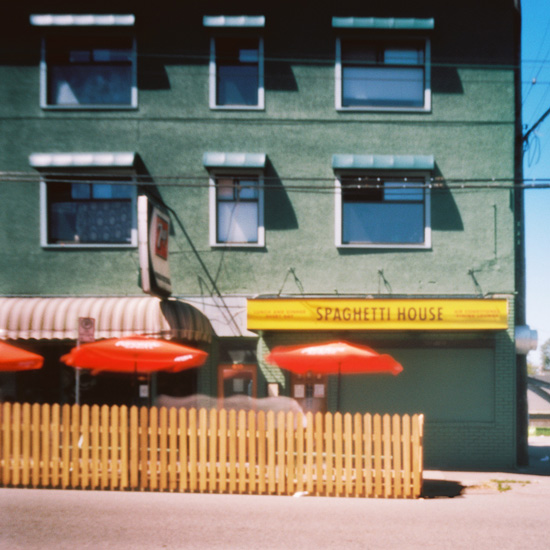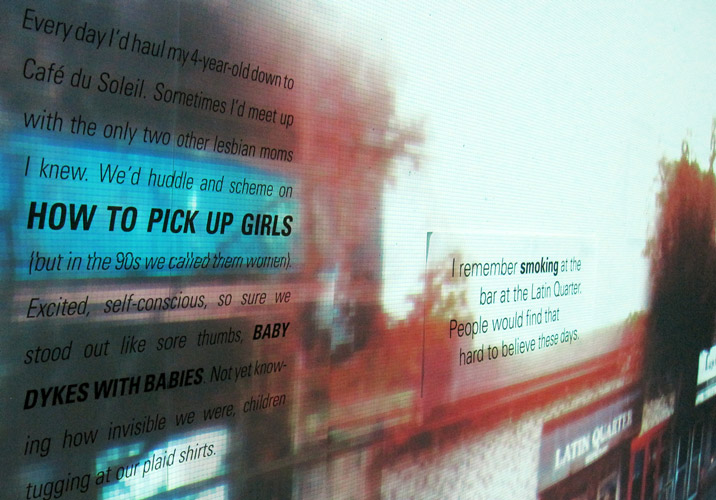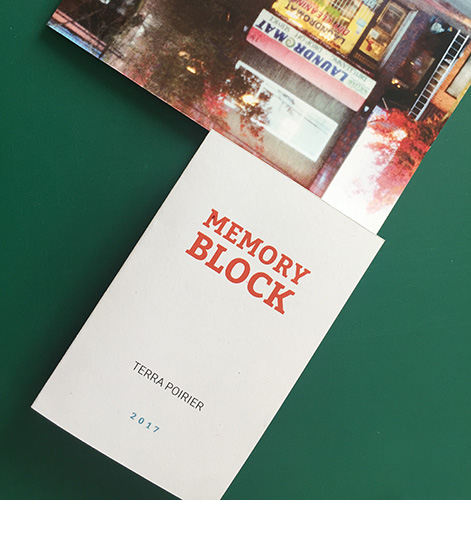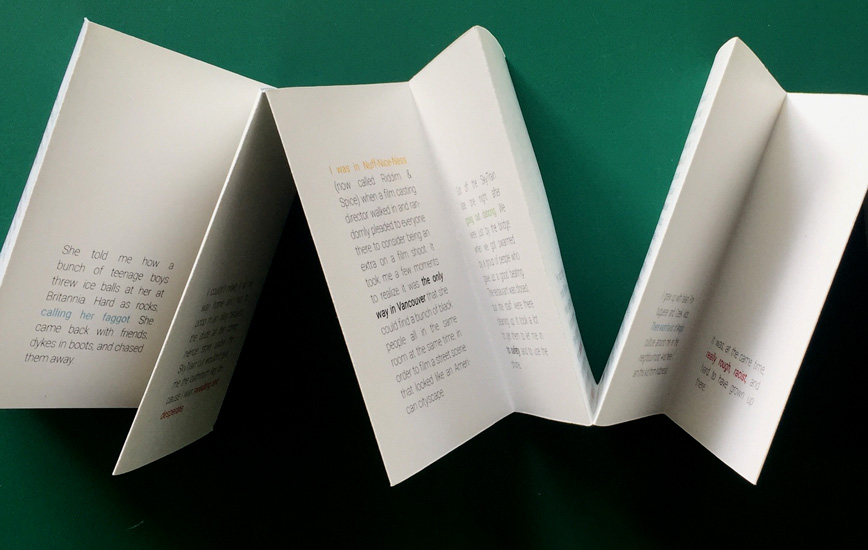Memory Block
2011–
Since 2011 I have been working on an archival project about Commercial Drive, originally responding to Stan Douglas’s high fidelity panoramic photographic work “Every Building on 100 West Hastings” which was in turn a response to Ed Ruscha’s artist book Every Building on the Sunset Strip. Both of these (otherwise very different) works emphasize architecture and depict busy streets as empty or nearly so. I wanted to instead emphasize community presence in my working-class, immigrant neighbourhood, one which was a lifeline for me as a poor, young lesbian mother.
I started by taking pinhole photographs of businesses that had been on the Drive at least since I had moved there in 1992—my own memory acting as benchmark. I love working with long exposure photography to represent memory because of its extra-analog nature: as the film is exposed, the image is overwritten, just as memory is reconstructed each time we access it.
But this destructive quality of pinhole means that moving objects are shown as blurry or erased altogether—pointing to the destructiveness of gentrification. To underline human presence, I invited community members—other artists, activists, writers and queers—to share stories about the businesses I had photographed. My interest was not only to create a community history, but also to consider how cultural producers are contributing to gentrification.
The first iteration of Memory Block was a digital projection of a reconstructed, composite “block” over textual posters of the stories. When viewers approached to read the stories, the projector cast their shadows on the wall, effectively blocking parts of the image, just as consumers (of culture, food, art) compromise low-income neighbourhoods as we enjoy them, as well as how we experience gaps in memory when we attempt recollection.
I also created an artist book as an extension of the installation. The choice of a maze accordion fold not only references Ed Ruscha’s accordion Sunset Strip book, but also speaks to the disorienting quality of memory—the viewer can get lost trying to move through the block and the stories.
The image-text installation was shortlisted for the 2017 Lind Prize for Emerging Artists and exhibited in a finalist group show at Presentation House Gallery. The book was featured in a video from the Cynthia Sears Artist’s Book Collection at the Bainbridge Island Museum of Art: https://youtu.be/wKoSIfo6bTI.
I am grateful to the many community members who shared their stories of our neighbourhood. The stories in the 2017 installation and book are by: Kristine A., Michelle Buchanan, ISC, Wayde Compton, Donna Dykeman, Terrie Hamazaki, Nancy Pang, Terra Poirier, Nadene Rehnby, Michelle Sylliboy.
Memory Block is an ongoing archive, and I plan to produce a second installation and book of new photographs and stories.







